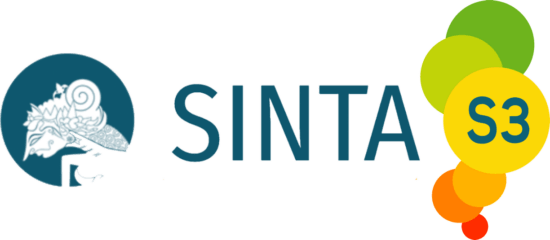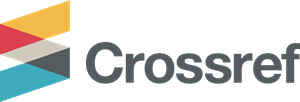Academic Stress and Cyberslacking in Students: The Moderating Role of Emotion Regulation
Keywords:
academic stress, cyberslacking, emotion regulationAbstract
In the digital era, students increasingly rely on technology for academic purposes, yet they also face significant challenges such as cyberslacking—using the internet for non-academic activities during study time. This study investigates the role of emotion regulation in moderating the relationship between academic stress and cyberslacking among university students. A quantitative research design with a correlational approach was employed, involving 100 participants who completed online surveys assessing academic stress, emotion regulation, and cyberslacking behaviors. The Emotion Regulation Questionnaire (ERQ), Perception of Academic Stress Scale (PASS), and Cyberslacking Scale were utilized to gather data. Descriptive statistics, assumption testing, and moderation analysis were conducted using Jamovi software. The research findings indicate a significant positive relationship between academic stress and cyberslacking (Estimate = 0.69, p<0.01). Additionally, no relationship was found between emotion regulation and cyberslacking (p>0.05). Furthermore, the interaction between academic stress and emotion regulation on cyberslacking was also not significant (p>0.05). Specifically, students with lower emotion regulation exhibited a stronger association between academic stress and cyberslacking, while those with higher emotion regulation showed a reduced impact. These findings highlight the importance of effective emotion regulation in mitigating the negative effects of academic stress on cyberslacking.
References
Aina, Q., & Wijayati, P. H. (2019). Coping the Academic Stress: The Way the Students Dealing with Stress. KnE Social Sciences, 3(10), 212. https://doi.org/10.18502/kss.v3i10.3903
Al-Hariri, M. T., & Al-Hattami, A. A. (2017). Impact of students’ use of technology on their learning achievements in physiology courses at the University of Dammam. Journal of Taibah University Medical Sciences, 12(1), 82–85. https://doi.org/10.1016/j.jtumed.2016.07.004
Alkhawaldeh, A., Al Omari, O., Al Aldawi, S., Al Hashmi, I., Ann Ballad, C., Ibrahim, A., ... & ALBashtawy, M. (2023). Stress Factors, Stress Levels, and Coping Mechanisms among University Students. The Scientific World Journal, 2023(1), 2026971.
Bedewy, D., & Gabriel, A. (2015). Examining perceptions of academic stress and its sources among university students: The Perception of Academic Stress Scale. Health psychology open, 2(2). https://doi.org/10.1177/2055102915 596714
Chung, S., Lee, J., & Lee, H. K. (2019). Personal factors, internet characteristics, and environmental factors contributing to adolescent internet addiction: A public health perspective. International journal of environmental research and public health, 16(23), 4635.
Dinarti, L., & Satwika, Y. (2022). Hubungan stres akademik dengan perilaku cyberloafing pada mahasiswa. Character Jurnal Penelitian Psikologi, 9(7), 84-95. https://doi.org/10.26740/cjpp.v9i7.47977
Elfil, M., & Negida, A. (2017). Sampling methods in Clinical Research; an Educational Review. PubMed Central (PMC). https://www.ncbi.nlm.nih.gov/pmc/articles/PMC5325924/
Farsani, S. I., Allahbakhshi, K., Valipour, A. A., & Mohammadian-Hafshejani, A. (2016, November 1). Some Facts on Problematic Internet Use and Sleep Disturbance among Adolescents. PubMed Central (PMC). https://www.ncbi.nlm.nih.gov/pmc/articles/PMC5182270/
Fatimah, P. L. (2021). Tingkat Stres Akademik Mahasiswa Universitas Muhammadiyah Malang dalam Pembelajaran Daring Selama Pandemi 58 Covid-19. Skripsi. Malang, Universitas Muhammadiyah Malang. https://eprints.umm.ac.id/75642/
Genc, E., & Pirincci, E. (2023). The relationship between internet addiction and physical activity levels of university students in a province in eastern Turkey. Work, 1–10. https://doi.org/10.3233/wor-230015
Gökçearslan, Ş., Durak, H. Y., & Esiyok, E. (2023). Emotion regulation, e‐learning readiness, technology usage status, in‐class smartphone cyberloafing, and smartphone addiction in the time of COVID‐19 pandemic. Journal of Computer Assisted Learning, 39(5), 1450–1464. https://doi.org/10.1111/jcal.12785
Gross, J. J. (1998). The emerging field of emotion regulation: An integrative review. Review of General Psychology, 2(3), 271–299. https://doi.org/10.1037/1089-2680.2.3.271.
Gross, J. J. (2015). Emotion regulation: Current status and future prospects. Psychological inquiry, 26(1), 1-26.
Güğerçin, U. (2019). Does techno-stress justify cyberslacking? An empirical study based on the neutralisation theory. Behaviour & Information Technology, 39(7), 824–836. https://doi.org/10.1080/0144929x.2019.1617350
Güğerçin, U. (2020). Does techno-stress justify cyberslacking? An empirical study based on the neutralisation theory. Behaviour & Information Technology, 39(7), 824-836.
Hailegebreal, S., Sedi, T. T., Belete, S., Mengistu, K., Getachew, A., Bedada, D., Molla, M., Shibiru, T., & Mengiste, S. A. (2022). Utilization of information and communication technology (ICT) among undergraduate health science students: a cross-sectional study. BMC Medical Education, 22(1). https://doi.org/10.1186/s12909-022-03296-9
Hao, Q., Peng, W., Wang, J., Tu, Y., Li, H., & Zhu, T. (2022). The correlation between internet addiction and interpersonal relationship among teenagers and college Students Based on Pearson’s Correlation Coefficient: A Systematic Review and Meta-Analysis. Frontiers in Psychiatry, 13. https://doi.org/10.3389/fpsyt.2022.818494
Jagiello, T., Belcher, J., Neelakandan, A., Boyd, K., & Wuthrich, V. M. (2024). Academic Stress Interventions in High Schools: A Systematic Literature review. Child Psychiatry and Human Development. https://doi.org/10.1007/s10578-024-01667-5
Kobylińska, D., & Kusev, P. (2019). Flexible Emotion Regulation: How situational demands and individual differences influence the effectiveness of regulatory strategies. Frontiers in Psychology, 10. https://doi.org/10.3389/fpsyg.2019.00072
Kolhar, M., Kazi, R. N. A., & Alameen, A. (2021). Effect of social media use on learning, social interactions, and sleep duration among university students. Saudi journal of biological sciences, 28(4), 2216–2222. https://doi.org/10.1016/j.sjbs.2021.01.010
Krishna, S. M., & Agrawal, S. (2023). Cyberloafing: Exploring the role of psychological wellbeing and social media learning. Behavioral Sciences, 13(8), 649. https://doi.org/10.3390/bs13080649
Li, X., & Liu, D. (2022). The influence of technostress on cyberslacking of college students in technology-enhanced learning: mediating effects of deficient self-control and burnout. International Journal of Environmental Research and Public Health, 19(18), 11800.
Li, X., & Liu, D. (2022). The influence of technostress on cyberslacking of college students in technology-enhanced learning: mediating effects of deficient self-control and burnout. International Journal of Environmental Research and Public Health, 19(18), 11800.
Lu, X., Wang, Y., Chen, X., & Lu, Q. (2024). From Stress to Screen: Understanding Cyberloafing through Cognitive and Affective Pathways. Behavioral Sciences, 14(3), 249. https://doi.org/10.3390/bs14030249
Metin-Orta, I., & Demirtepe-Saygılı, D. (2021). Cyberloafing behaviors among university students: Their relationships with positive and negative affect. Current Psychology, 42(13), 11101–11114. https://doi.org/10.1007/s12144-021-02374-3
Metin-Orta, I., & Demirtepe-Saygılı, D. (2021). Cyberloafing behaviors among university students: Their relationships with positive and negative affect. Current Psychology, 42(13), 11101–11114. https://doi.org/10.1007/s12144-021-02374-3
Mishra, D., & Tageja, N. (2022). Cyberslacking for coping stress? Exploring the role of mindfulness as personal resource. International Journal of Global Business and Competitiveness, 17(Suppl 1), 56-67.
Mylona, I., Deres, E. S., Dere, G. S., Tsinopoulos, I., & Glynatsis, M. (2020). The Impact of internet and videogaming addiction on adolescent Vision: A Review of the literature. Frontiers in Public Health, 8. https://doi.org/10.3389/fpubh.2020.00063
Nasir, N., Adetya, S., & Yuliana, Y. (2023). Dampak Cyberslacking pada Tingkat Pembelajaran Mahasiswa. Journal on Education, 5(2), 4624-4632. https://doi.org/10.31004/joe.v5i2.1191
Ningtias, Y. C., & Magistarina, E. (2023). Hubungan antara stres akademik dengan perilaku cyberloafing pada mahasiswa Universitas Negeri Padang. Innovative: Journal Of Social Science Research, 3(5), 10054–10062. https://doi.org/10.31004/innovative.v3i5.5761
Nweke, G. E., Jarrar, Y., & Horoub, I. (2024). Academic stress and cyberloafing among university students: the mediating role of fatigue and self-control. Humanities & Social Sciences Communications, 11(1). https://doi.org/10.1057/s41599-024-02930-9
Oriji, A., & Johnson, C. (2024) Cyberloafing/Cyberslacking in educational institutions: Examining the positive and negative consequences on students academic activities. International Journal of Advanced Education and Research, 9 (1), 49 - 56.
Owusu, A., Bleboo, E.M., & Taana, I.H. (2021). Preliminary insights into cyberslacking impact on graduate students academic performance: a case study of a business school in Ghana. Journal of Theoritical and App;oed Information Technology. 99 (6), 1461 - 1476.
Radde, H. A., & Saudi, A. N. A. (2021). Uji validitas konstrak dari emotion regulation questionnaire versi bahasa Indonesia dengan menggunakan confirmatory factor analysis. Jurnal Psikologi Karakter, 1(2), 152-160.
Romero-López, M., Pichardo, C., De Hoces, I., & García-Berbén, T. (2021). Problematic Internet Use among University Students and Its Relationship with Social Skills. Brain Sciences, 11(10), 1301. https://doi.org/10.3390/brainsci11101301
Sari, P., Bulantika, S. Z., Dewantari, T., & Rimonda, R. (2020). Effects of stress coping and emotion regulation on student academic stress. Konseli, 7(1), 73–80. https://doi.org/10.24042/kons.v7i1.6300
Shi, R., Zhang, S., Zhang, Q., Fu, S., & Wang, Z. (2016). Experiential Avoidance Mediates the Association between Emotion Regulation Abilities and Loneliness. PloS One, 11(12), e0168536. https://doi.org/10.1371/journal.pone.0168536
Simanjuntak, E., Fajrianthi, F., & Purwono, U. (2019). Skala cyberslacking pada mahasiswa. Jurnal Psikologi, 18(1), 55-68. https://doi.org/10.14710/jp.18.1.55-68
Taneja, A., Fiore, V., & Fischer, B. (2015). Cyber-slacking in the classroom: Potential for digital distraction in the new age. Computers and Education/Computers & Education, 82, 141–151. https://doi.org/10.1016/j.compedu.2014.11.009
The jamovi project (2023). jamovi. (Version 2.4) [Computer Software]. Retrieved from https://www.jamovi.org.
Timotheou, S., Miliou, O., Dimitriadis, Y., Sobrino, S. V., Giannoutsou, N., Cachia, R., Monés, A. M., & Ioannou, A. (2022). Impacts of digital technologies on education and factors influencing schools’ digital capacity and transformation: A literature review. Education and Information Technologies, 28(6), 6695–6726. https://doi.org/10.1007/s10639-022-11431-8
Vitak, J., Crouse, J., & LaRose, R. (2011). Personal Internet use at work: Understanding cyberslacking. Computers in Human Behavior, 27(5), 1751–1759. https://doi.org/10.1016/j.chb.2011.03.002
Xu, Y., Li, Y., Zhang, Q., Yue, X., & Ye, Y. (2022). Effect of social media overload on college students’ academic performance under the COVID-19 quarantine. Frontiers in Psychology, 13. https://doi.org/10.3389/fpsyg.2022.890317
Yorulmaz, E. (2020). What is the role of emotional regulation and psychological rigidity in the relationship between stress and pathological Internet use? Düşünen Adam Psikiyatri Ve Nörolojik Bilimler Dergisi. https://doi.org/10.14744/dajpns.2019.00062
Downloads
Published
How to Cite
Issue
Section
License
Copyright (c) 2024 Martaria Rizky Rinaldi, Jelang Hardika, Retvi Wiyoanti

This work is licensed under a Creative Commons Attribution-NonCommercial-ShareAlike 4.0 International License.
Authors who publish with this journal agree to the following terms:- Authors retain copyright and grant the journal right of first publication with the work simultaneously licensed under a Creative Commons Attribution License that allows others to share the work with an acknowledgement of the work's authorship and initial publication in this journal.
- Authors are able to enter into separate, additional contractual arrangements for the non-exclusive distribution of the journal's published version of the work (e.g., post it to an institutional repository or publish it in a book), with an acknowledgement of its initial publication in this journal.
- Authors are permitted and encouraged to post their work online (e.g., in institutional repositories or on their website) prior to and during the submission process, as it can lead to productive exchanges, as well as earlier and greater citation of published work (See The Effect of Open Access).

 Martaria Rizky Rinaldi
Martaria Rizky Rinaldi
 Fakultas Psikologi, Universitas Mercu Buana Yogyakarta
Fakultas Psikologi, Universitas Mercu Buana Yogyakarta












